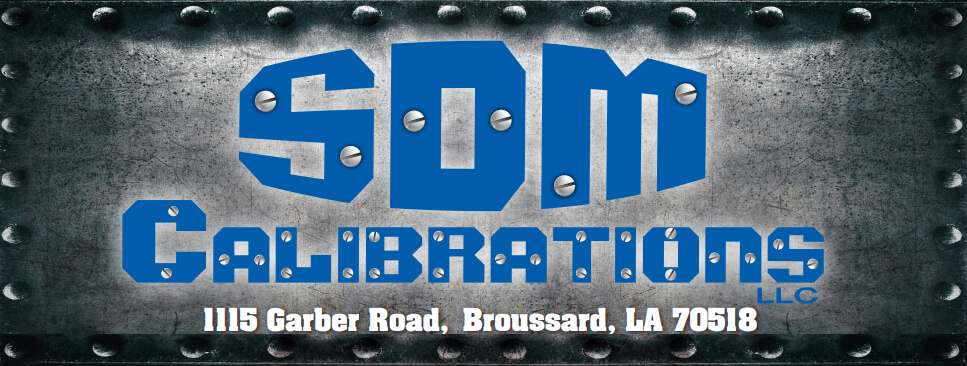Dimensional Calibration Services
Dimensional calibration refers to calibrations that involve equipment that measures the physical size of an object related to length, width, diameters and angles. It is also used to check equipment that measures the geometrical properties of machined parts such as hole position, flatness, parallelism and part profiles.
Dimensional equipment includes items such as micrometers, calipers, ring gages, plug gages, digital indicators, levels, gage blocks and larger equipment like CMM’s, optical comparators and toolmakers microscopes.

Dimensional equipment is used in nearly every manufacturing environment and their measurements play an important role in monitoring any deviations within the manufacturing processes and to ensure the proper assembly and interchangeability of components.
The quality or calibration laboratories that manage that equipment will have a system in place to routinely calibrate the equipment to ensure that it continues to meet the proper specifications and will provide the correct and accurate measurement results.
Gage Blocks are the master dimensional standard used in most calibration laboratories. Gage Blocks are sets of individual blocks where two opposing faces have been precisely ground flat and parallel so that the faces are an exact distance apart. Precision Gage Blocks can have a length accuracy as low as a few micro-inches. They are usually made of hardened steel, tungsten or chromium carbide or ceramic. The blocks are in various standard-length sizes and can be combined together to create any length combination within the range of the set.
Temperature Effects
Temperature is the largest factor to be considered when performing dimensional calibrations not only of the equipment or parts to be measured but also the temperature of the measuring equipment standards and the temperature of the calibration environment. The materials that the parts are made from and the materials in the measuring equipment will change dimensions based on the coefficient of thermal expansion of the material.
The coefficient of thermal expansion is expressed in terms of the amount of change, per degree change, per unit length. For materials made from steel, the coefficient of thermal expansion is approximately 6.5 x 10-6”/deg F. Thus, a 1-inch steel gage block will lengthen approximately 6.5 millionths of an inch for every 1°F temperature change above 68°F.
Due to this thermal expansion, dimensional measurements must be referenced to a defined temperature. ISO standard ISO 1 ‘Geometrical Product Specifications’ defines that standard reference temperature at 20 °C (68°F). When performing dimensional calibrations, the measurements will need to be referenced back to this temperature.
This is usually accomplished by making all measurements in a 20°C temperature-controlled room or by making temperature corrections if the measurements are taken at a different temperature. If the materials of the equipment being calibrated and the reference standard are the same, then corrections are usually not required if the items are at the same temperature during calibration as the thermal expansion will affect the items the same.
Minimizing the Effects of Temperature
Calibration technicians need to be careful to maintain the thermal properties of the equipment and not introduce temperature errors into the measurement process.
When an item that is at a normal ambient temperature is handled with bare hands, the elevated heat from the hands will be transferred into the item. This can quickly heat up the item enough to indicate a serious measurement error, depending on the resolution of the measurement. During most dimensional calibrations, all parts and equipment should never be touched by bare hands. Gloves should always be worn, or the items should be handled by tweezers or other means. Gloves will also prevent oils on the hands from contaminating the surface of the items and possibly causing rust or discoloration.
Any dimensional item that needs to be calibrated needs to have the proper amount of time to acclimate to the proper environmental temperature of the laboratory. If a piece of equipment has been recently delivered to the laboratory the equipment needs to be in the calibration environment typically overnight.
Equipment can be placed on a surface plate or steel plate near the inspection equipment to assist the equipment to reach the environmental temperature quicker. Electronic temperature probes can be placed on the equipment and on the soaking plate to determine when the temperatures are both the same.
Dimensional (0-80” Linearity, flatness, angularity, parallelism, pitch, and thickness)
1-2-3 & 2-4-6 Blocks
Angle Block
Bench Micrometer
Bore Micrometer
BX & BXG1000 Gage
Calipers (Dial, Digital, Vernier)
Calipers
Caliper Setting Master
CMM Length Setting Standard
Cam Lock Gage and Standards
Coating Thickness Gage
Coating Thickness Standard
Cylindrical Plug Gage
Cylindrical Ring Gage
Depth Gage (Dial, Digital, Vernier)
Depth Gage Setting Master
Dial Bore Gage
Dial Indicators
Drift Bars
External Taper Gage
External Thread Roll Gauge
FARO Arm
Feeler Gage Set
Fillet Weld & Groove Profile Sets
Gage Ball Set
Gage Blocks
Gagemaker Setting Blocks
Hand Crimp Tool
Height Gage
Internal Taper Gage
Internal Thread Roll Gage
Lead Gage
Lead Gage Standards
Levels
Lixer Standard
Measuring Tape
Micrometer Standards
Micrometer (OD, ID, Depth, Groove)
MRP Gage
MRP Standards
Mic-Trac Measurement Center
Parallel Bar
Pin Gages
Profile Gage
Protractor
Ring Groove Diameter Gauge
Standoff Feeler Gage
Stator Deep Reach Bore Gauge
Steel Scale (Ruler)
Step Test Block
Squareness Gage
Surface Plate
Thread Height Gage
Thread Height Standard
Thread Roll Set
Thread Wires
Threaded Plug Gage (UN, ACME, Stub ACME, NPT)
Threaded Split Rings
V-Blocks
Request a Quote or Send a Message
Contact Us
Billing
P.O. Box 1076
Broussard, LA 70518
Address
1115 Garber Road
Broussard, LA 70518
Open Hours
Mon – Fri – 8:00am – 5:00pm
1115 Garber Rd,
Broussard, LA 70518


